When you have a good trunk to work with and the goal is to improve the branches, you’re working with a tree in the middle stages of development. For pines with large trunks, this stage can last five to ten years or more, depending on your goals for the silhouette.
The two pines below were grown by Chris and Lisa Kirk at Telperion Farms east of Salem, Oregon. My guess is that they are close to twenty years old, give or take.
I’d originally planned to make a large bonsai from the tree below but have since changed my mind and am now aiming to make a medium size bonsai. In time, I’ll reduce the trunk just above the lower cluster of foliage.
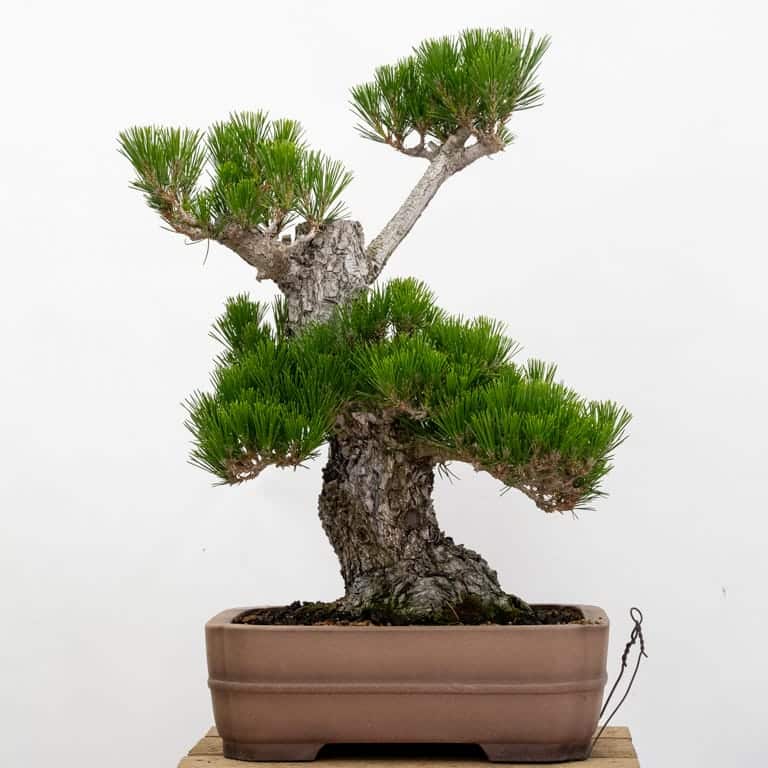
Black pine
Because I want the branches that will form the new apex to grow rapidly, I’ll avoid decandling them this year. (For a primer on how to decandle black and red pines, see Decandling, an in-depth guide.) The red tape helps me remember which shoots not to cut.
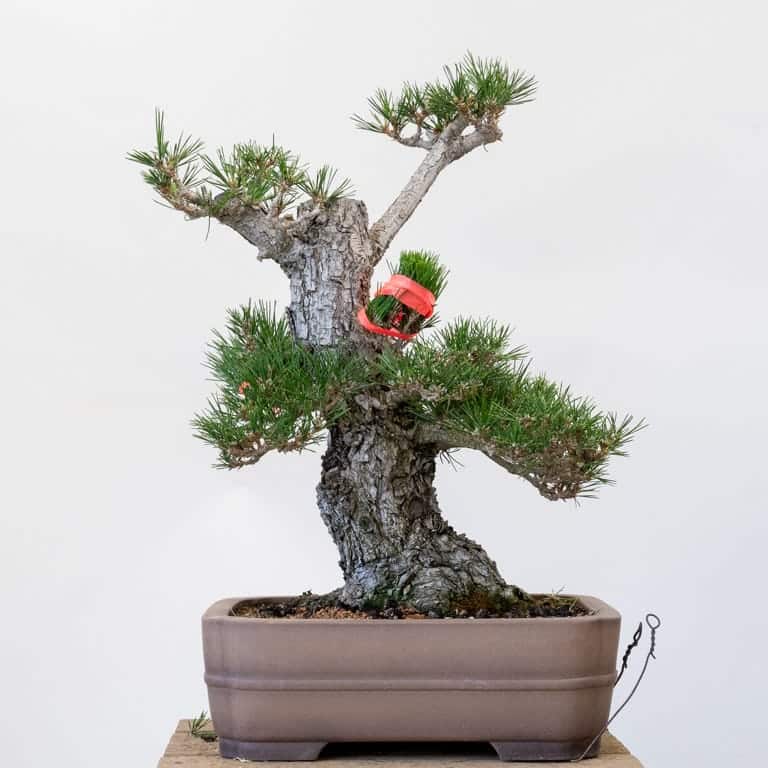
After decandling the lower branches
The next step was to thin the needles. I kept between three to five pairs per branch.
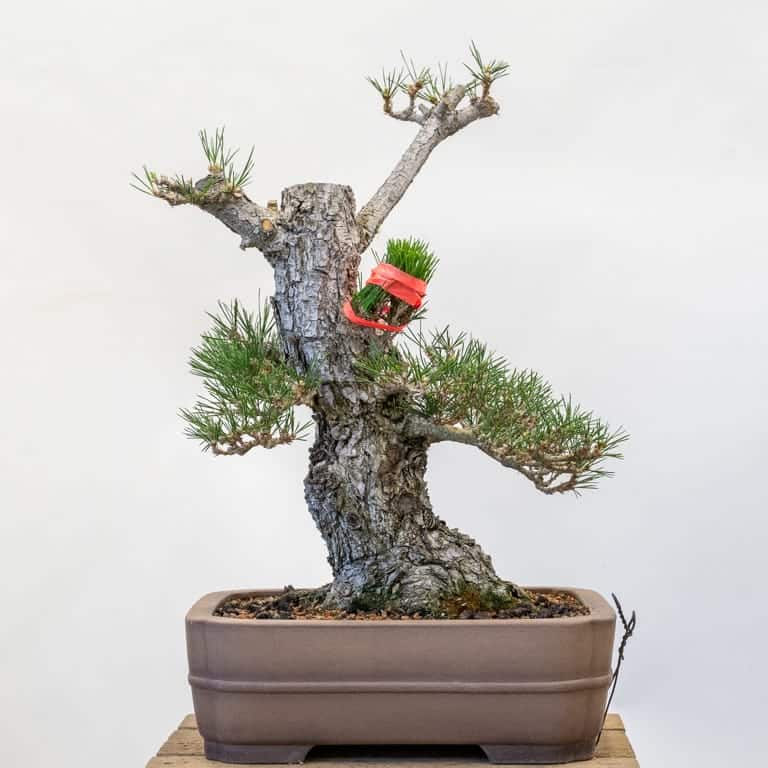
After thinning the needles
To get a head start on wiring, I used short pieces of rebar to lower the lowest branches on the right side.
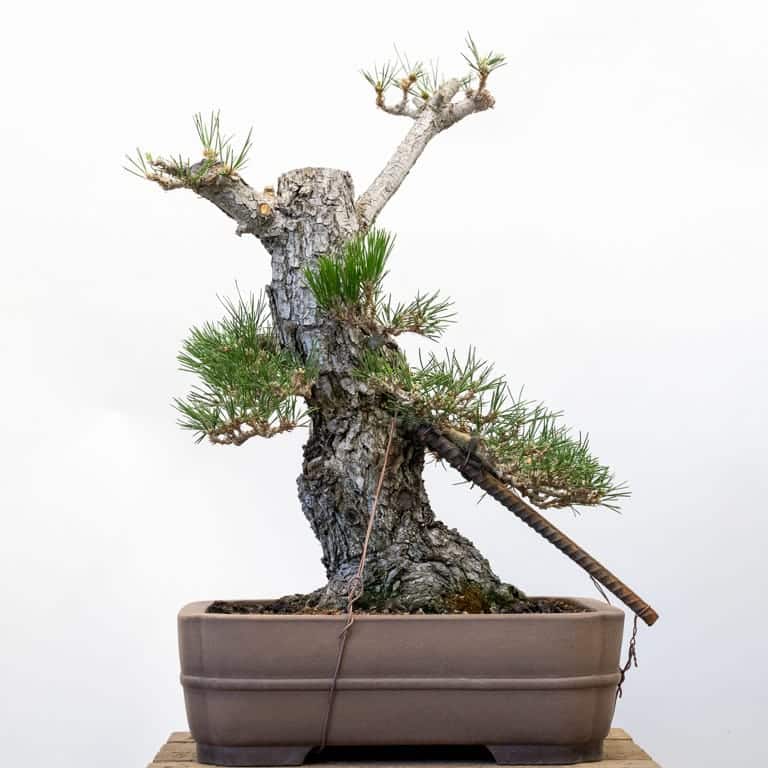
After wiring – 22″
The process looked similar on the back of the tree. I decandled all of the branches except for a row of shoots on the main back branch as I want it to grow longer.
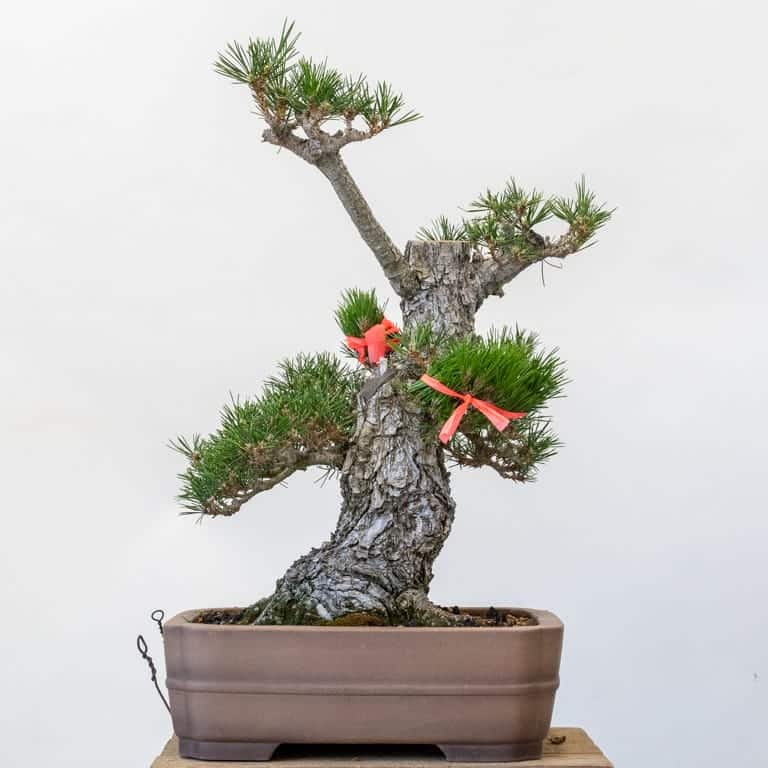
After decandling
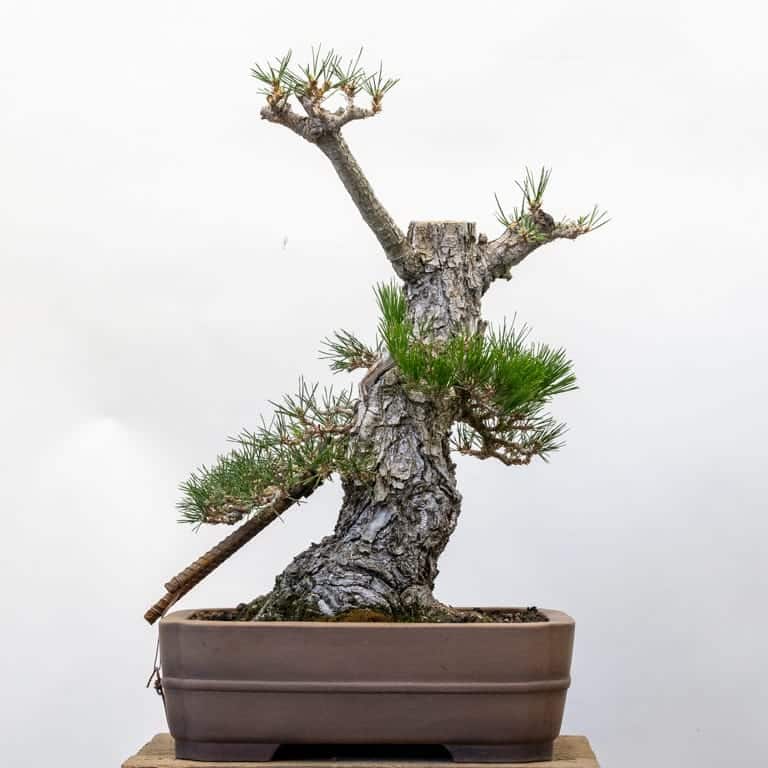
After thinning needles and wiring
I kept, but decandled, the upper branches as I want to preserve as much sap flow through the trunk as possible. I’ll look to reduce the trunk once the new apex is bigger, likely in one to two years.
A slightly larger pine got a similar treatment. Because the branches are already on the long side, I shortened them after decandling. And because the tree is strong, I decandled every new shoot (except for the sacrifice branch extending from the new apex) in an effort to gradually slow the tree down.
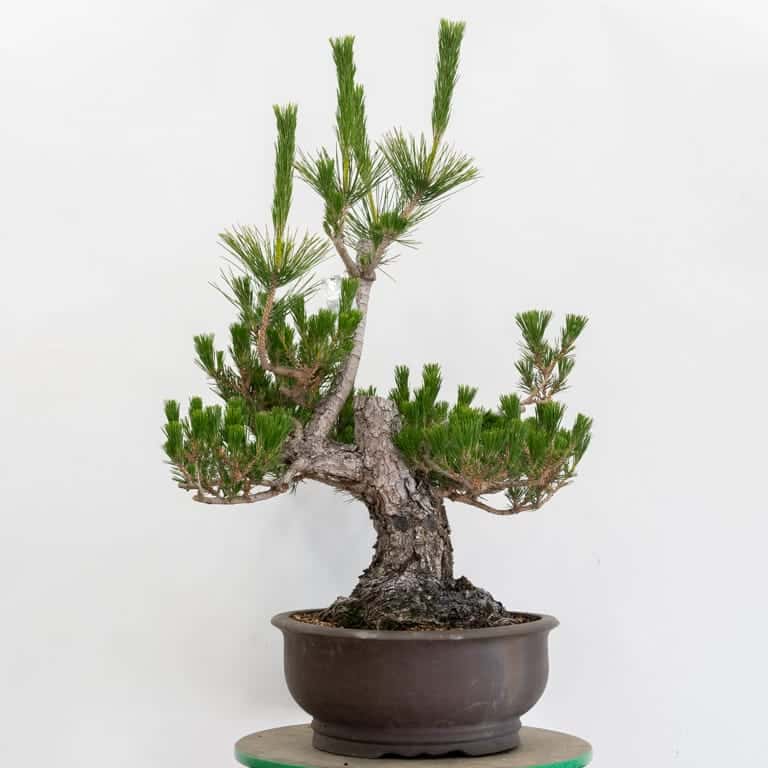
Before decandling
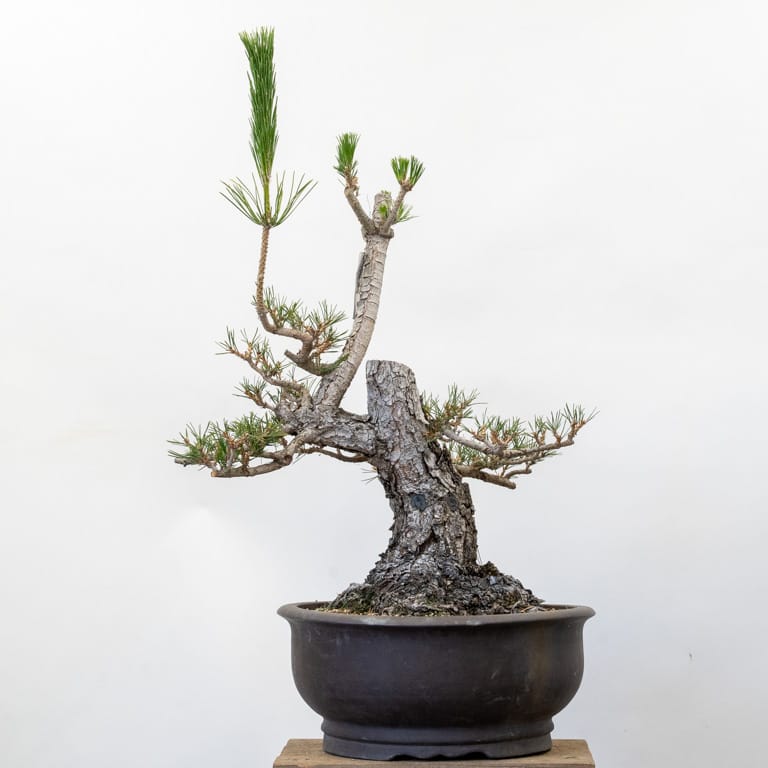
After decandling and thinning needles
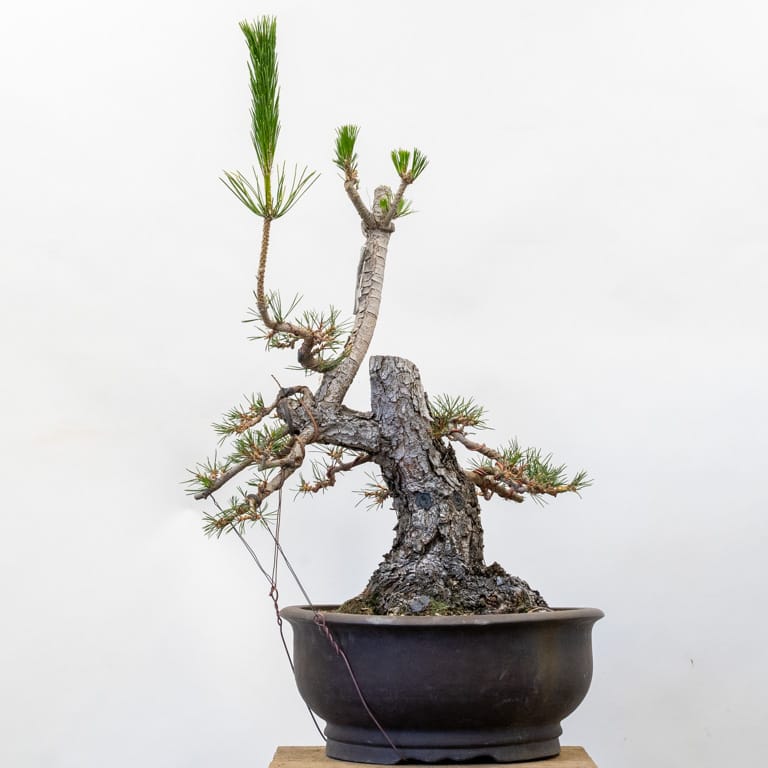
After wiring – 33″
As with the first tree, I preserved the old sacrifice branch in an effort to maintain good sap flow on all sides of the trunk to preserve as many roots as possible and increase the zones where I can graft new branches down the road.
I enjoy this work because it requires creativity and requires careful decisions about what to cut and what to let grow. This may result in trees that look funny on the bench for a few years, but it’s the fastest way I know of to create appealing bonsai with interesting structure.
News & Updates
Here’s a list of helpful links for learning more about the Pacific Bonsai Expo.
- Tickets and Merchandise
- Passes for our fundraiser, the Friday Evening Reception
- Donation and Sponsorship opportunities (page includes a link to our budget for the event)
And in case you missed our recent podcast episodes about the expo:
Subscribe to Bonsai Tonight
New Posts Delivered Every Tuesday and Friday
Patrick Weller says
Loved the pine presentation. I have one that I need to try and shape similarly. Thanks for the great work.
Jonas Dupuich says
Thanks, Patrick!
Britton says
You say you decandled, then shortened some branches. Does that mean you decandled a particular branch, then cut back further but not past old-growth needles?
Thanks,
Britt
Jonas Dupuich says
Ah, good point, I didn’t mention that. I cut into the old needles for almost 100% of the cuts on the large pine, and likely 0% on the smaller pine. I shortened the branches by standard pruning (the branches were way too long to start with).
Britton says
Thanks for the reply Jonah! So it’s as if you didn’t “decandle” but instead did a hard prune beyond all of this years first flush? This is something I’m considering for a pretty old, but leggy and vigorous JPB I’ll be working on soon.
Jonas Dupuich says
There were two pruning operations. First I decandled everything by cutting into the old candles (decandling and then some: https://bonsaitonight.com/2018/08/17/stimulating-back-buds-on-japanese-black-pine/ ). Second, I reduced the length of several branches that were too long. Does this help?
Britton K Corkey says
That link is exactly what I needed. Thank you!
Darth Masiah says
Really great material. these are going to be real stunners.
Jonas Dupuich says
Thanks, Darth!
Tia says
Hi Jonas,
I hope you are well and I have some real newbie questions.
On the second tree, you decandled every new shoot and left only a few needles on each, which I find terrifying! Will that then promote heavy shoot growth into developing into branches further back on the main long branch? Because when you decandeled every shoot, then how does it develop into a better and longer shoot to be an eventual branch for shaping?
I am looking forward to watching these trees develop!
Thank you so much,
Tia
Jonas Dupuich says
Hi Tia! If you look at some of the older pine posts you can see how the branch design comes together (for example: https://bonsaitonight.com/2023/01/07/field-grown-black-pine-progression-part-1/ and https://bonsaitonight.com/2023/01/13/field-grown-black-pine-progression-part-2/)